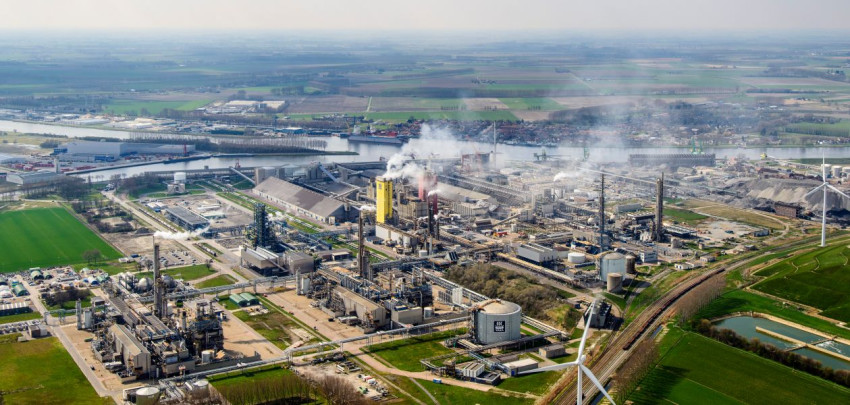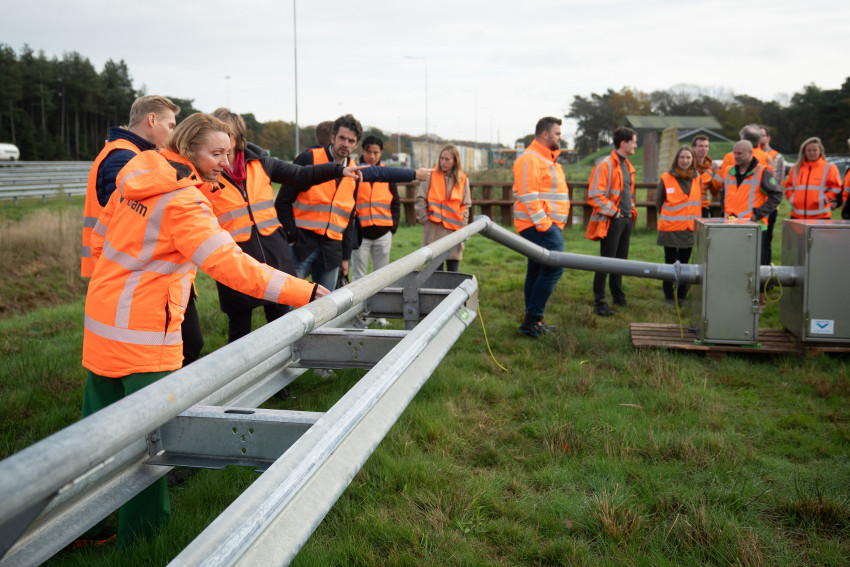
Schelde Delta Industrial Sector sets sail for sustainability
Energy-intensive companies in the Schelde delta have published a roadmap that will reduce their CO2 emissions by 90%. It will require an investment of around 700 million euros.
The industrial sector is a major player in the Schelde delta, with CO2 emissions in excess of 20 Mtons. In fact, these Schelde companies account for one tenth of the total annual Dutch emissions.
They are mainly located in the Moerdijk area and along the canal from Ghent to Terneuzen, so also in Belgium. The Schelde cluster includes the chemical companies Dow, ICL and Sabic, artificial fertiliser producer Yara, foodstuffs producer Cargill and the Arcelor Mittal steelworks, i.e. both Dutch and Belgian companies.
The roadmap (in Dutch), drawn up by the CE Delft sustainability advisory agency, describes how these companies could reduce their carbon footprint, while also identifying the investments required in installations and infrastructure in order to achieve this.
How do the companies plan to reduce their CO2 emissions?
In sequence of effect:
► Deployment of green hydrogen
Green hydrogen replaces the hydrogen produced using natural gas and at the same time serves as an alternative source for the production of heat.
► Storage of CO2
This concerns the CO2 emitted during the production of steel and by hydrogen produced from natural gas.
► Useful deployment of CO2
As a base material for chemicals and the production of concrete, for example.
► Innovative technology and re-use of materials
For example, the deployment of industrial heat pumps to save energy. The re-use will mainly concern plastics.
► Electrification
Electric heating instead of natural gas will reduce the carbon footprint.
► Geothermal energy
There is probably a useful source of geothermal energy in Bergen op Zoom.
Investment in infrastructure and installations
The companies aim to update their industrial processes to reduce CO2 emissions by 90% around the year 2040. However, considerable investment will be required in new installations and infrastructure. The roadmap gives a number of examples:
► Sufficient supply of green electricity
Green hydrogen and electrification is only useful in combating CO2 emissions if they make use of green electricity. The nuclear plants at Doel and Borssele currently supply non-fossil-fuel electricity, but the Schelde cluster will require a direct connection to offshore wind energy to become sustainable.
► Green hydrogen factory
Existing electrolysis installations have a capacity of 300-720 tons H2, this must be increased by at least a factor of 10 to meet demand from the Schelde companies.
► Hydrogen infrastructure
The existing infrastructure must be expanded to supply the companies with hydrogen. Hydrogen pipelines will then take on the role currently played by natural gas pipelines.
► Supply and processing of waste plastic
The re-use of plastic requires an infrastructure for its supply, and an installation for basic processing. The roadmap refers to a pyrolysis factory, in which plastic is thermally cleaned in order to decompose it and render it suitable for further re-use.
► CO2 network
The storage of CO2 requires a pipeline network to transport the greenhouse gas to the empty gas fields in the North Sea. The Schelde cluster thereby aims to link into the pipeline network already planned by the Port of Rotterdam.
Government must provide the networks
The majority of installations and infrastructure needs to be available around 2030 in order to safeguard the timely reduction of CO2. This will require an investment of around 700 million euros. The companies are willing to partially finance this themselves, though they regard the construction of the infrastructure for green electricity, hydrogen and CO2, which accounts for around 200 million euros, to be the government's responsibility.
The Schelde companies' roadmap is not the only sustainability plan published by the heavy industries. Last month, the chemical industry introduced a similar publication (read 'Sustainable chemical sector is viable').
Check the video presentation of the Schelde cluster roadmap below.
Opening photo: the chemical cluster at Terneuzen Photo: Siebe Swart Luchtfotografie/Hollandse Hoogte.
If you found this article interesting, subscribe for free to our weekly newsletter!







